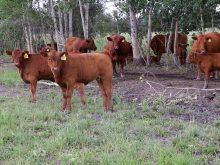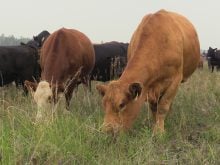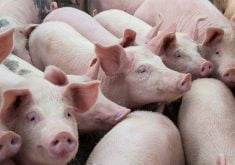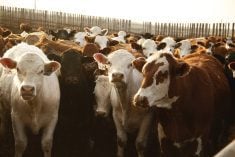EDMONTON – If agriculture was a unionized occupation it would be shut down and investigated for safety violations, says the head of Alberta Agriculture’s farm safety division.
Solomon Kyeremanteng gave farmers a stern lecture about the dangers of their life, telling them it’s not just economics that pushes young people off farms but the hazards of the job as well.
In Alberta, one person is killed every month and someone is hurt badly enough each day to require hospital care, he said.
“Believe it or not, agriculture in some provinces, is listed as the most dangerous occupation you can think of,” he said at a session of the Canadian Federation of Agriculture meeting here.
Read Also

Feeder market continues the climb
For the week ending Aug. 30, Western Canadian feeder cattle markets traded $4-8 per hundredweight higher on average.
His statistics say deaths are most frequent for children and those over age 60.
Most farmers in Alberta don’t have worker’s compensation or private liability insurance to protect employees because they say the premiums are too high. Yet money can’t buy back a father or replace a child who was killed in a farm accident, said Kyerementeng.
In Ontario, Quebec and British Columbia, farmers must pay worker’s compensation insurance premiums. Kyeremanteng said if Alberta farmers don’t take safety more seriously legislation could be introduced to require them to take out compensation.
Perhaps the most compelling argument for safety came from Ontario delegate Ken Kelly, who lost an arm in a farm accident. If farmers complain about the high cost of premiums they should remember they can control that by preventing accidents in the first place. Peer pressure and changed attitudes will bring costs down, Kelly said.
Printing more pamphlets and showing videos promoting farm safety is ineffective, Kyeremanteng said.
Emphasize seriousness
Alberta Agriculture, along with groups like the Women of Unifarm, use education programs aimed at children. He also suggested the media be used more creatively to impress people with the seriousness of the situation.
People also need incentives and should be made to understand that farm accidents are costly. Rehabilitation for those badly injured is the greatest expense and farm employers need to learn how costly accidents can be, not only to themselves but the entire health care system.
He also pointed out that in the U.S. most serious farm accidents end up in lawsuits. Two cases in southern Alberta were settled for about $250,000.















